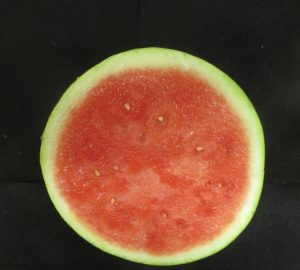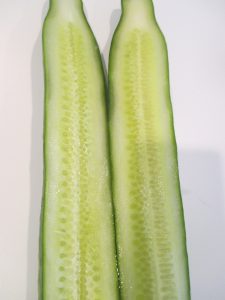A plant is considered to be seedless if it is able to produce a fruit without or contain a much-reduced number of seeds, or in some cases, only present traces of aborted seeds. Seedlessness is a desirable fruit character because seeds are often hard, have a bad taste and produce hormones that lead to fruit deterioration. As a result, seedless fruit often has better quality and longer shelf lives.
Seedless watermelons that were introduced in the 1990s have become the main type of watermelons grown in the U.S. Besides seedless watermelons, breeders have developed seedless varieties for other fruiting vegetables. This article briefly introduces the different types of seedless fruit and discusses potential opportunities for growing theses varieties.
Seedlessness exists in two forms. In the case of seedless watermelons, the fruit contains partially formed seeds that are aborted after fertilization (Figure 1.). Seedless watermelon plants are self-infertile. They must be pollinated by a seeded watermelon plant (diploid) in order to produce a seedless fruit. Another form of seedlessness is called parthenocarpy, for which fruit are seedless because the ovary is able to develop without fertilization, therefore they do not need pollination. The parthenocarpic character can be found in most of the common cucumber types (Figure 2), i.e. picking, slicer, long and mini cucumbers. It also exists in summer squashes. Green zucchinis are more likely to carry the parthenocarpic character, varieties include Partenon, Dunja etc. A yellow summer squash Golden Glory has also been found to set fruit without pollination.
Without the need for pollination, parthenocarpic cucumbers and summer squashes are ideal to be grown in high tunnels and greenhouses. In addition, these varieties work well with insects netting, as the nettings do not need to be removed at flower stage as required by varieties that need pollination.

